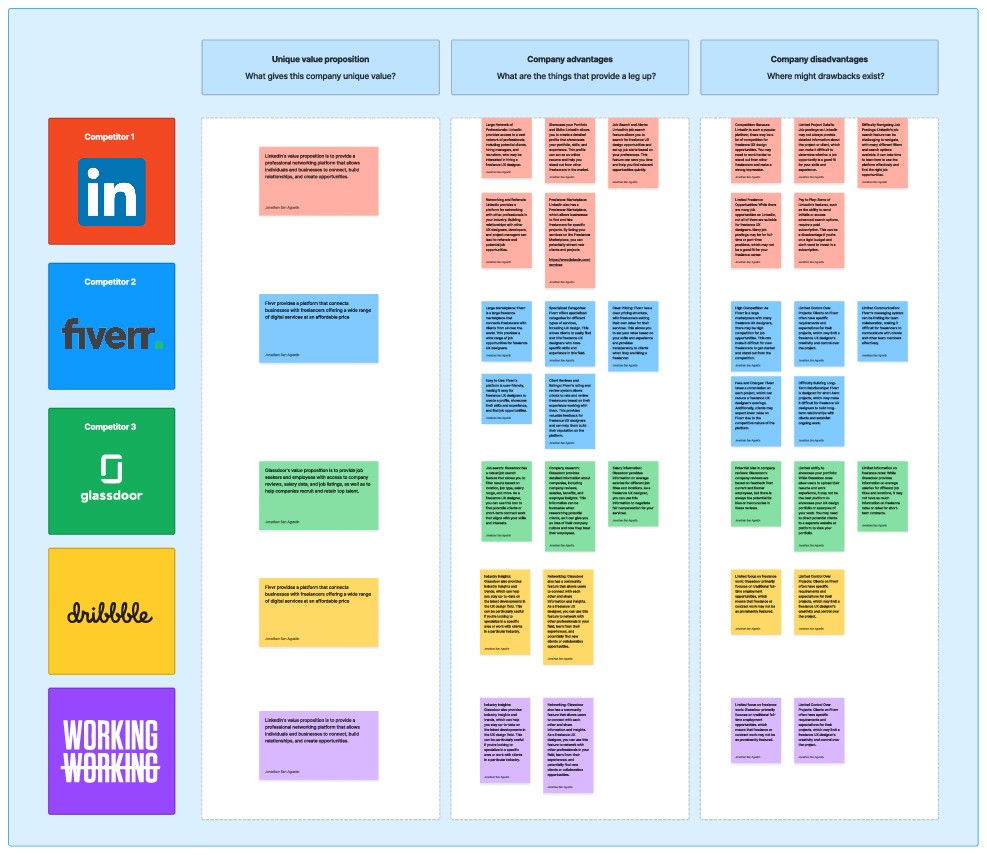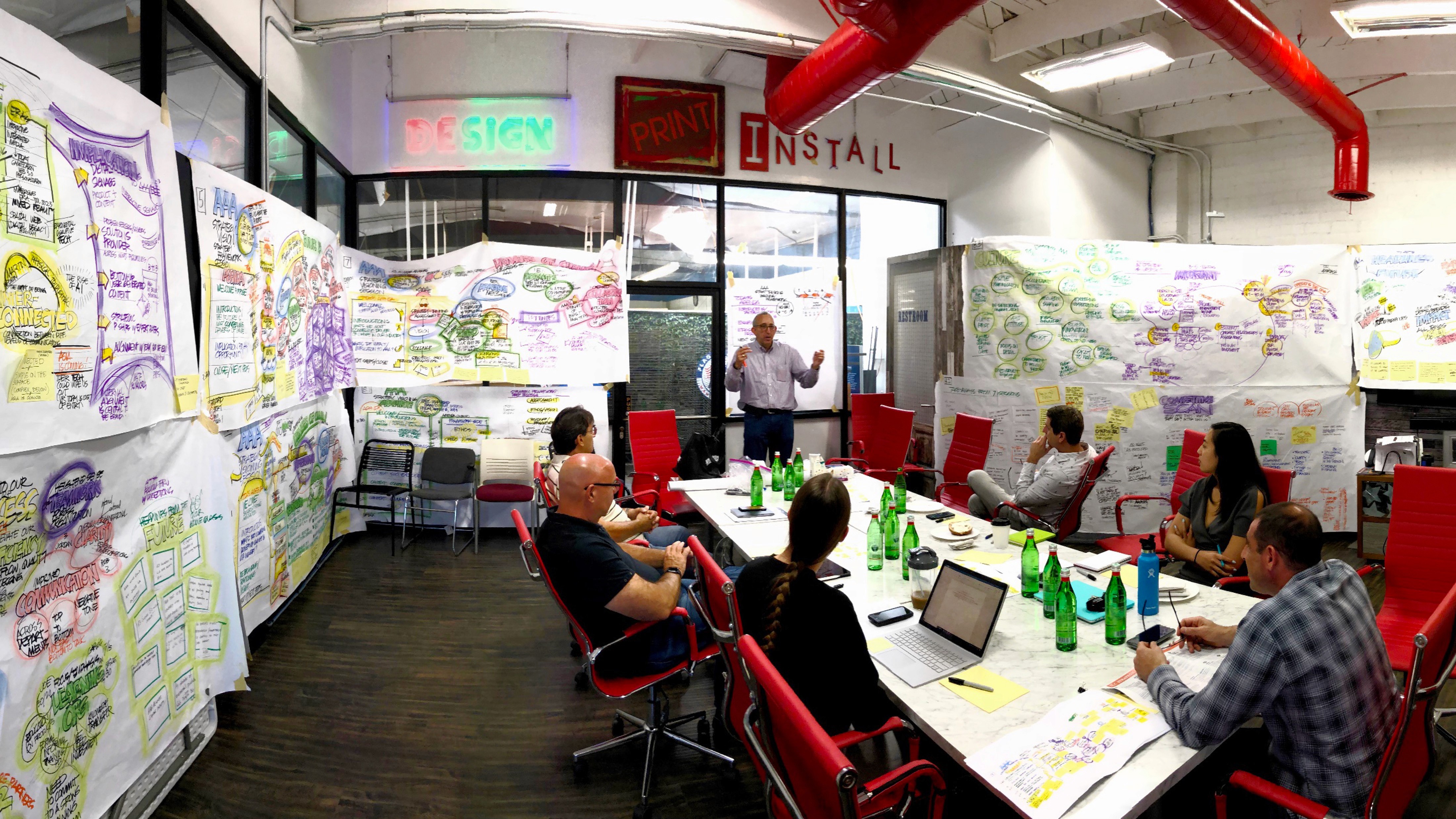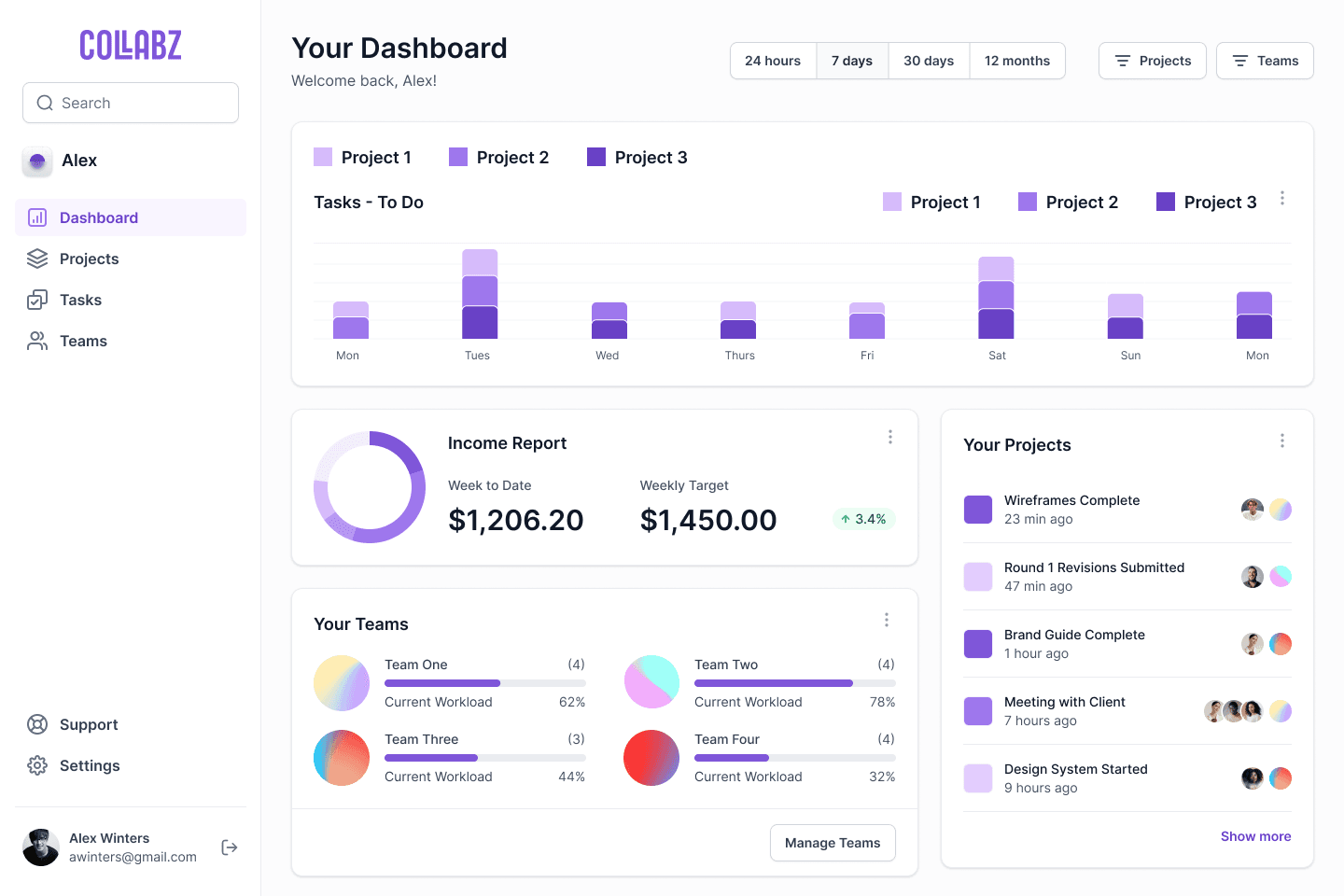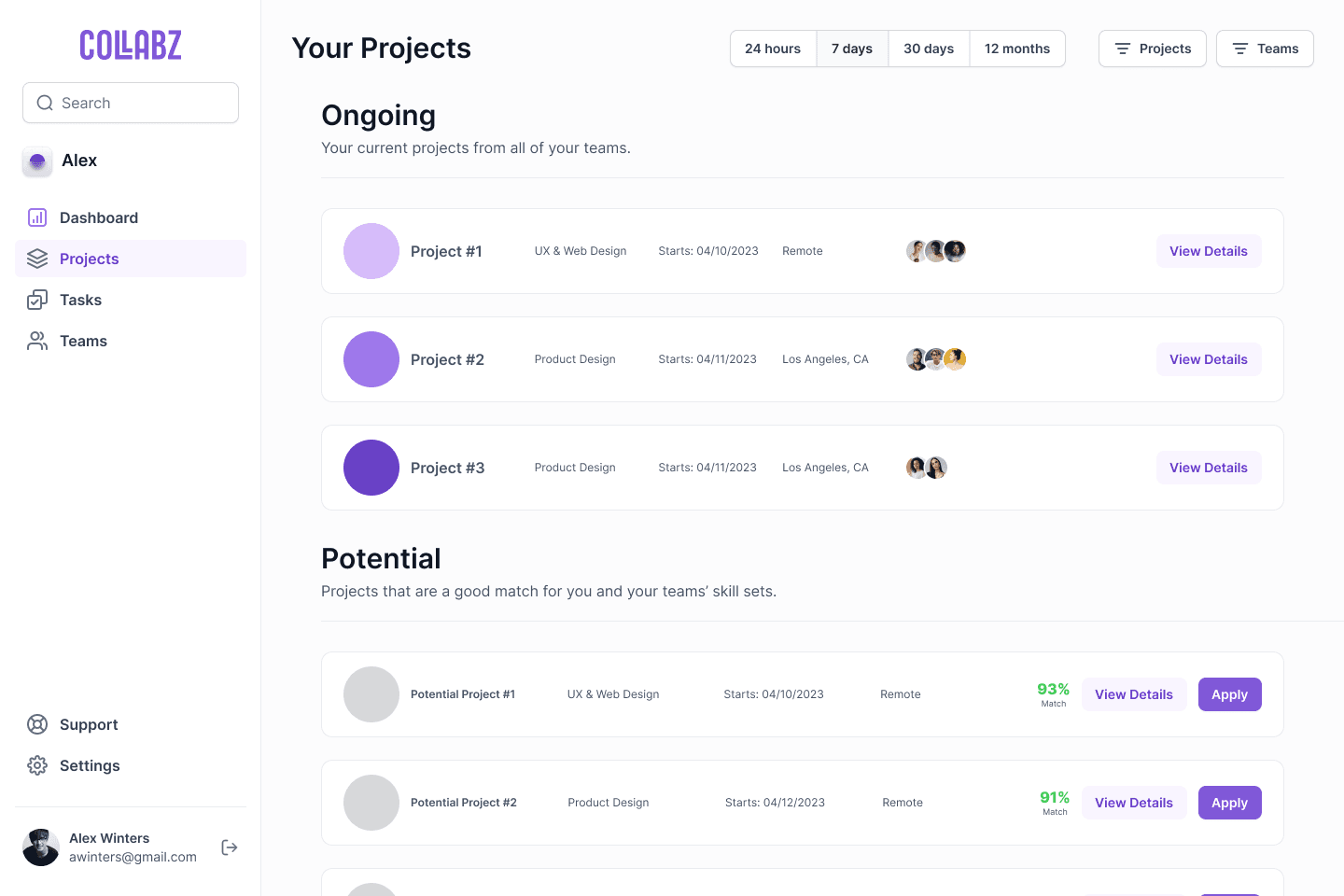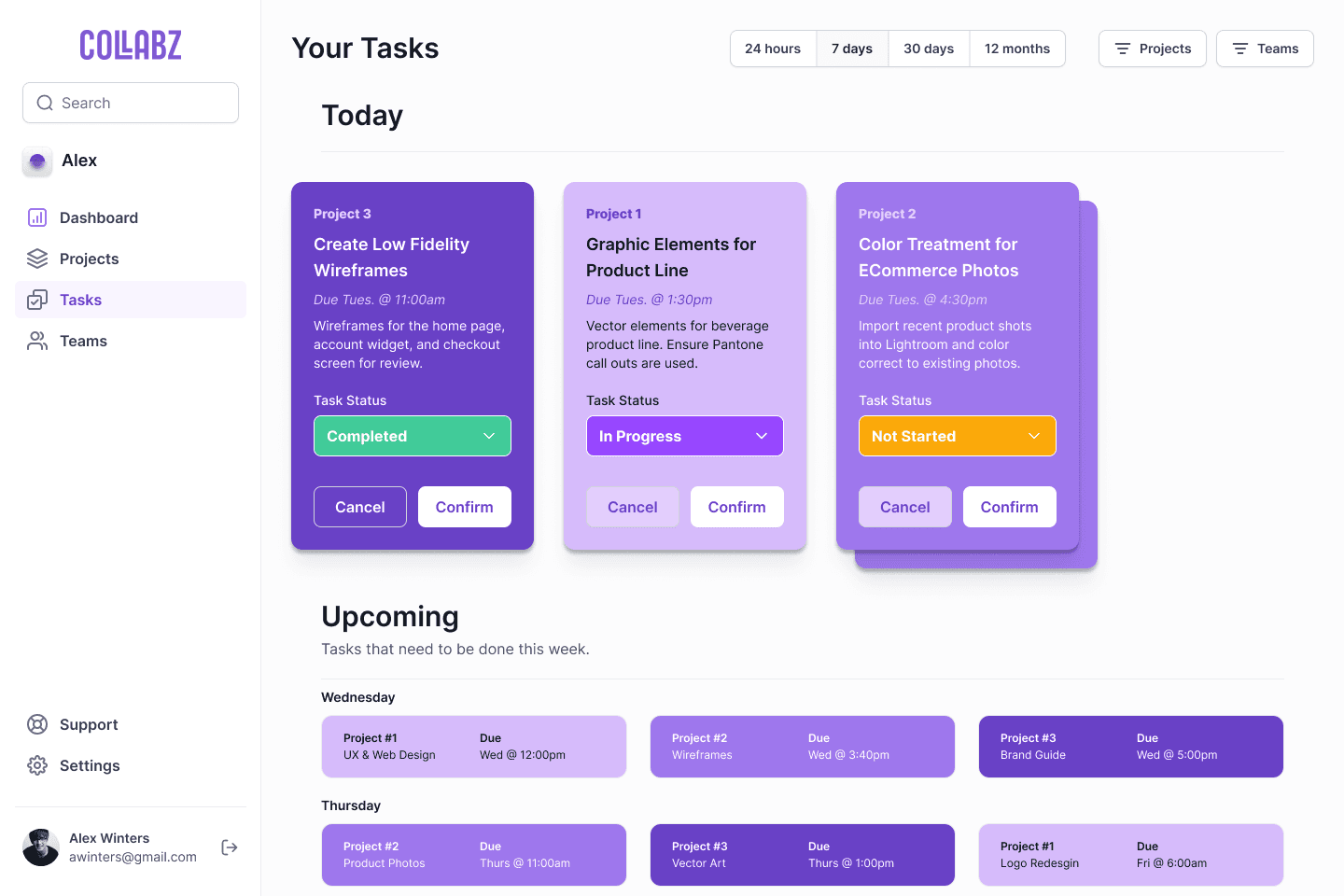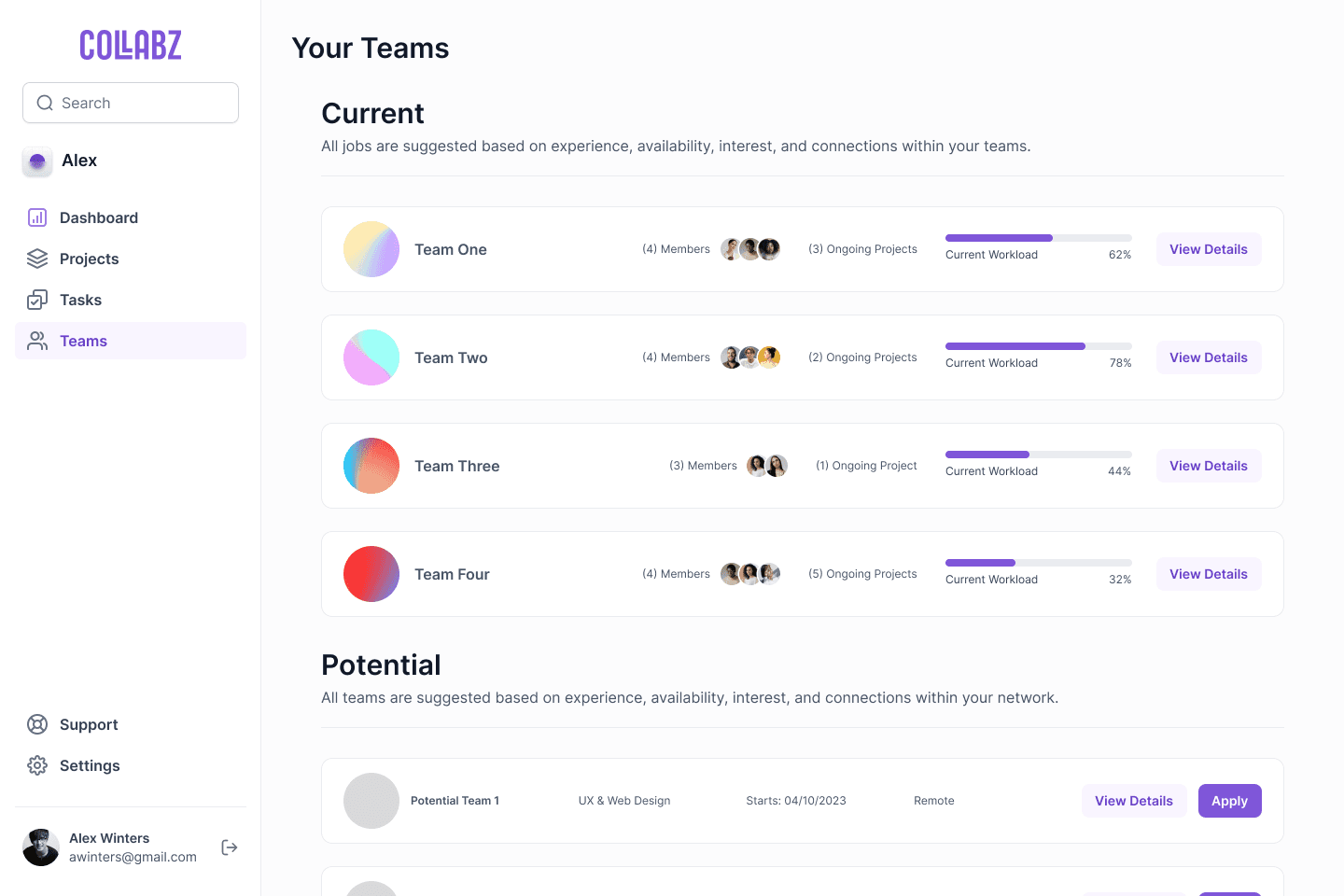
A digital platform for designers to build and manage teams

The Problem
The absence of a structured organizational framework for freelance designers hinders their ability to establish trust with clients and secure projects, placing them at a disadvantage compared to agencies or design collectives.
Competitive Analysis
Our team examined the top job listing and designer-focused platforms for finding jobs in order to understand user pain points and areas of opportunity.
Field Observation
By observing the brainstorming sessions during the company meeting for the creative firm A3 Visual we gained insight into what clients seek from design teams.
The Insights
Effective organizational structure plays a vital role in facilitating communication and trust within creative industries. Art school graduates acknowledge the importance of business skills, yet the majority received insufficient training in this area. Furthermore, research indicates that being referred by a current employee significantly improves job prospects. These insights underscore the significance of structure, the need for business training, and the value of personal connections in fostering success in creative careers.
User Persona
After gathering data to inform us of who the target demographic is as well as what their paint points in their creative and collaborative process are, our team crafted a user persona. This helped us develop a user that we could empathize with and ensure that the next steps continuously kept our team on track for crafting a product that addressed their needs.
User Journey
Our user persona was then utilized to create a journey map to map out key steps within their creative process, current interactions, positive/negative moments, and where we saw areas of opportunity to improve the UX of creative platforms that we researched during our competitive analysis. This allowed us to ideate features and services that we would include in our final product.
Service Blueprint
Using the insight from our research phase as well as the areas of opportunities pinpointed in our user persona and journey map we created a service blueprint. By mapping out the key interactions that the user would need, our team could then visualize how our solution would be structured, the user flow, and the overall user experience.
The Solution
Our team's solution is Collabz, an online platform that brings designers together to easily collaborate and work on projects.
Collabz offers an intuitive user experience, allowing designers to auto-import vital data from platforms like LinkedIn, Glassdoor, Indeed, and others. Resumes, work history, and portfolio pieces can be effortlessly synced, providing a comprehensive profile that showcases the designer's expertise and capabilities.
Upon creating a profile, designers can leverage Collabz to join or form teams tailored to their specific skillsets, availability, and compensation expectations. Through a thoughtfully designed interface, users can explore a wide range of projects and bid on those that align perfectly with their abilities and schedules.
Collabz empowers designers to effortlessly connect, collaborate, and contribute to projects, fostering a vibrant community and enabling seamless teamwork. With an emphasis on enhancing the UX and UI, Collabz brings designers together and transforms the way they work, ensuring efficiency, productivity, and unparalleled project success.
Main Dashboard
Shows an at-a-glance view of projects, income, teams, and tasks.
Projects Panel
Displays ongoing jobs on top as well as jobs available for bid below.
Tasks Panel
Organizes tasks according to their priority and estimated time of completion. Users can mark the stage of the tasks in order to update team members of their task status.
Teams Panel
Allows users to see the details of their active teams and the ability to view other teams that are a match for them.
Site built in Framer
Copyright© 2022.
